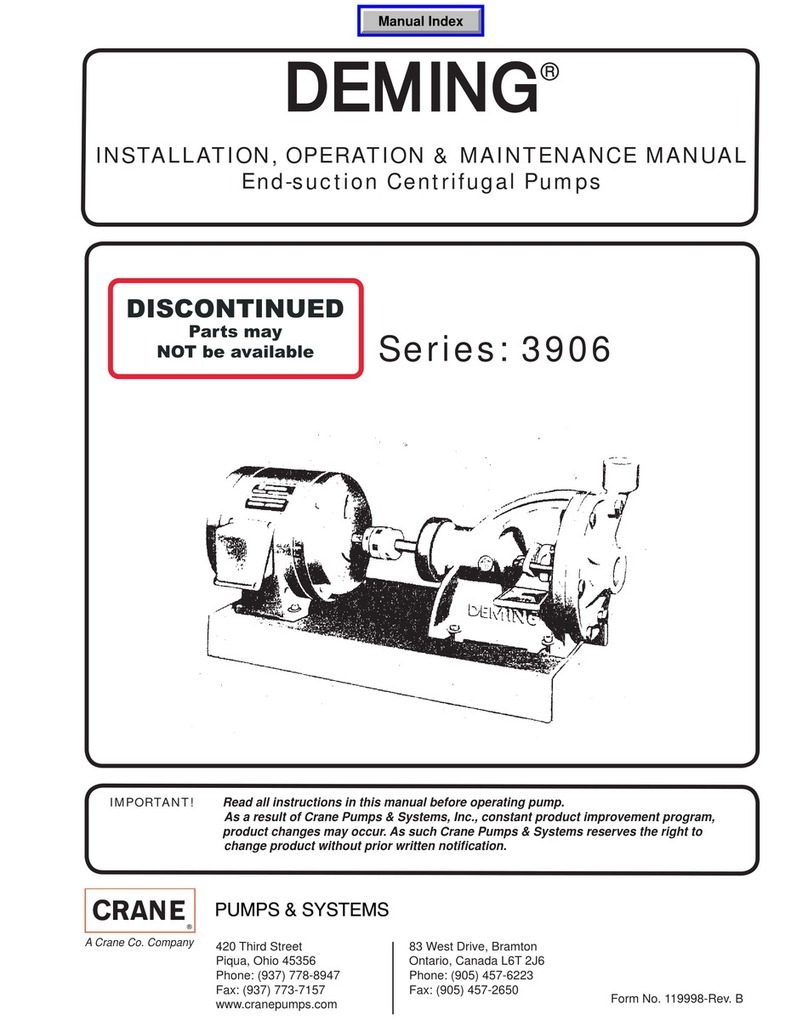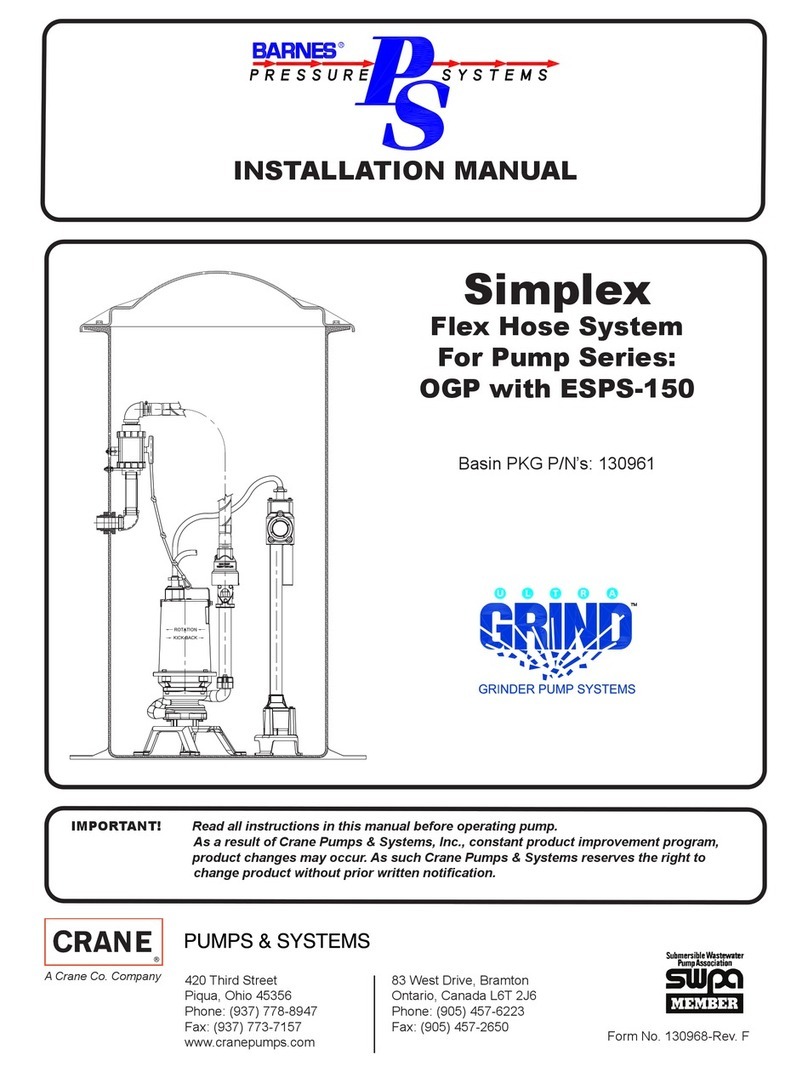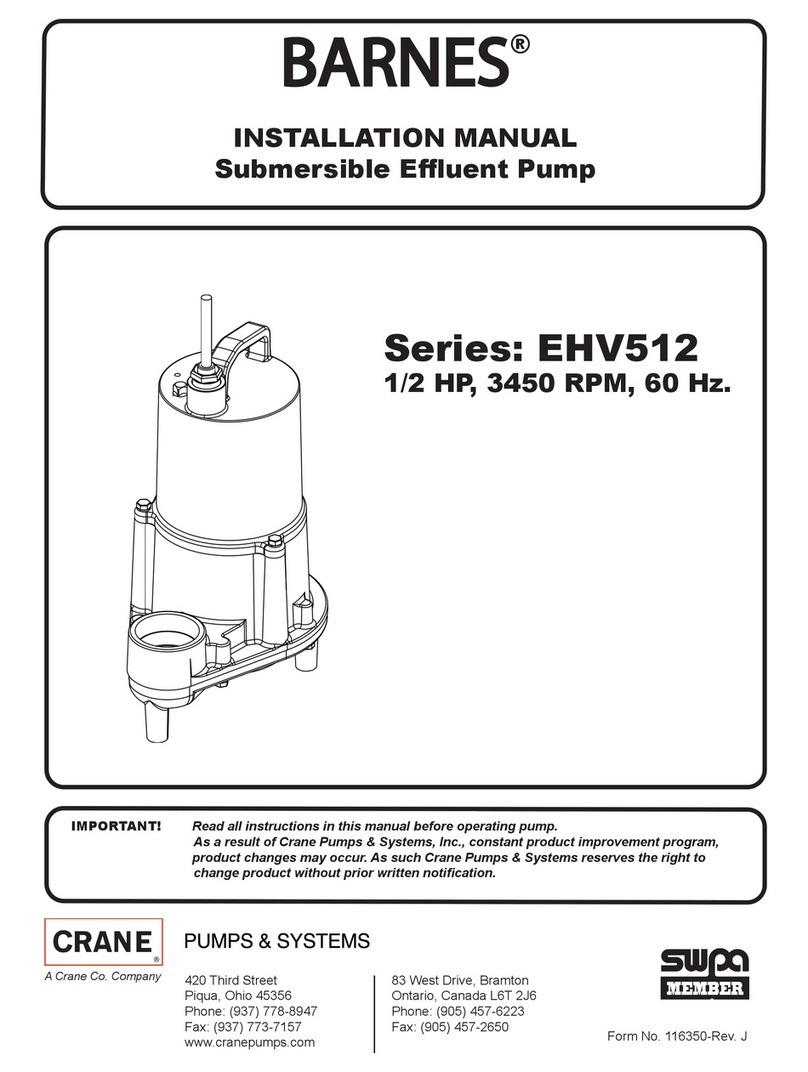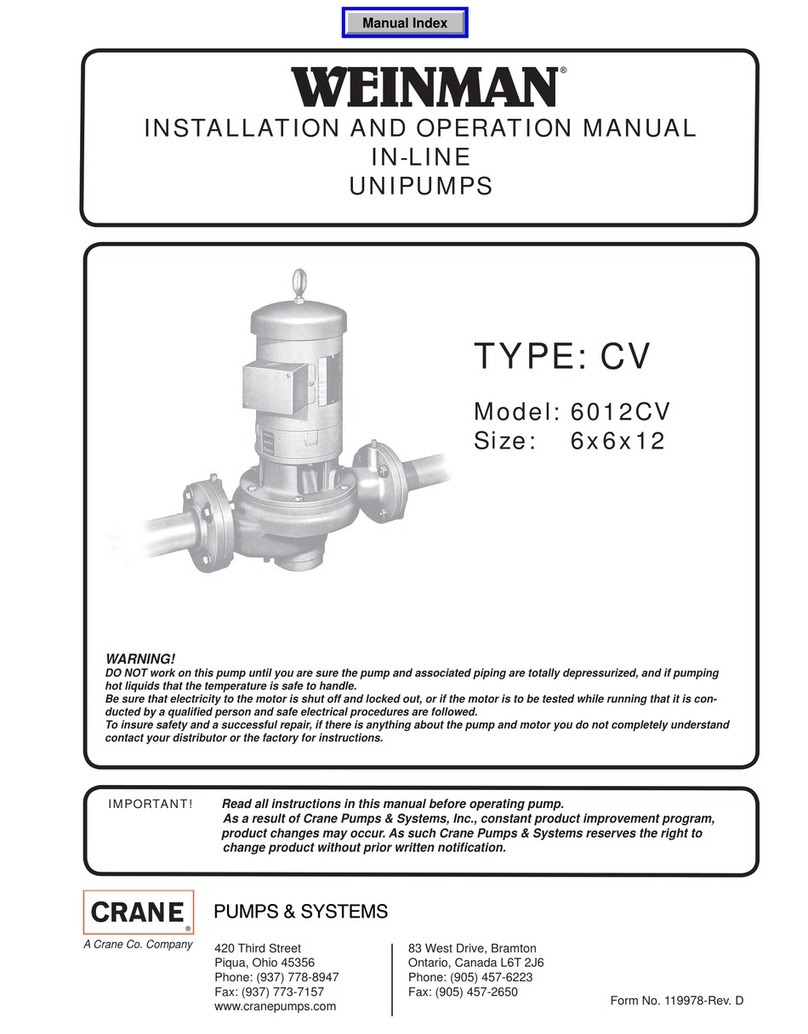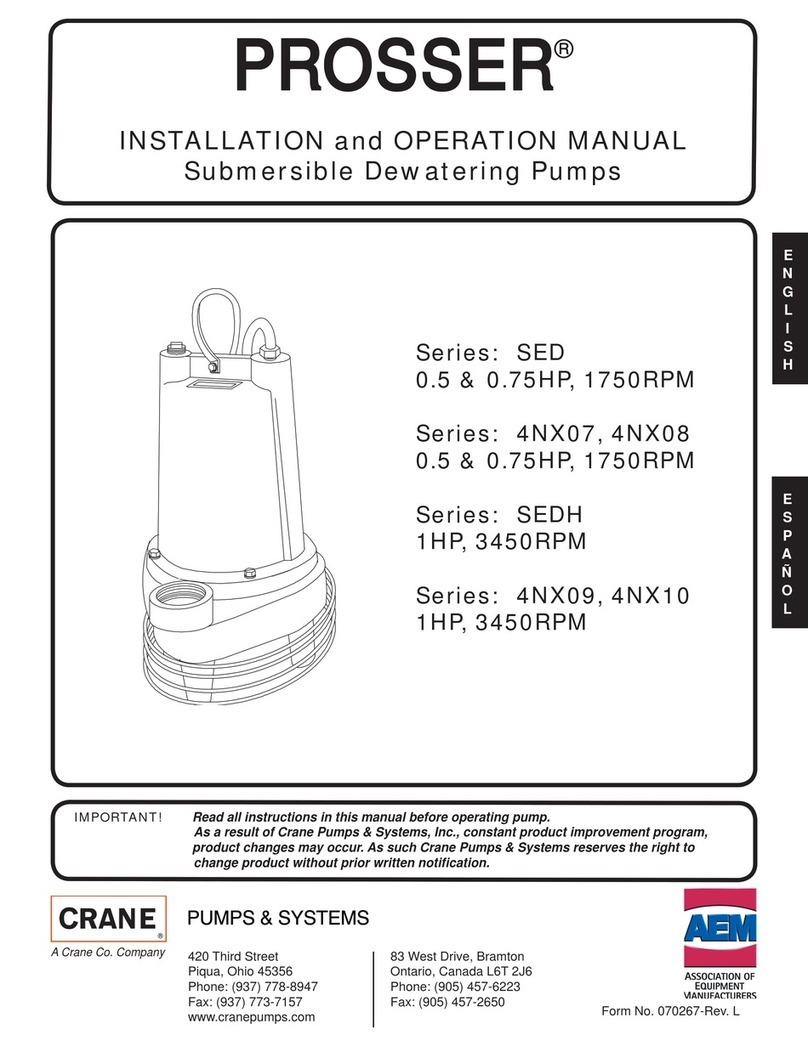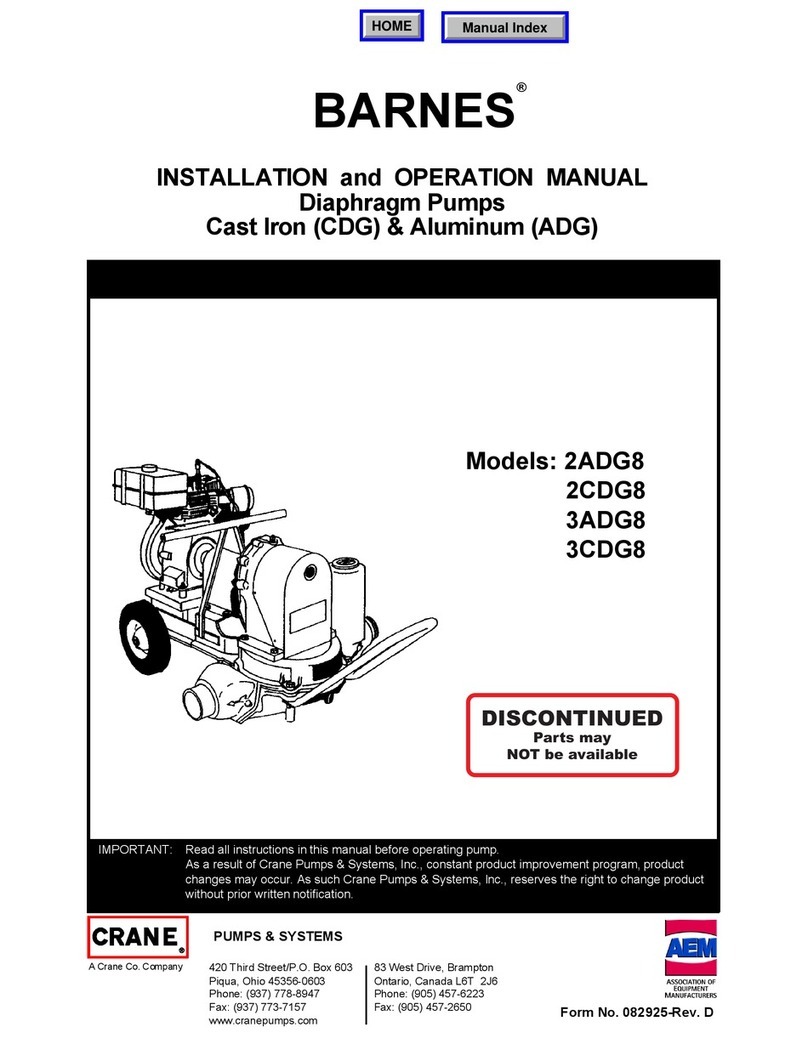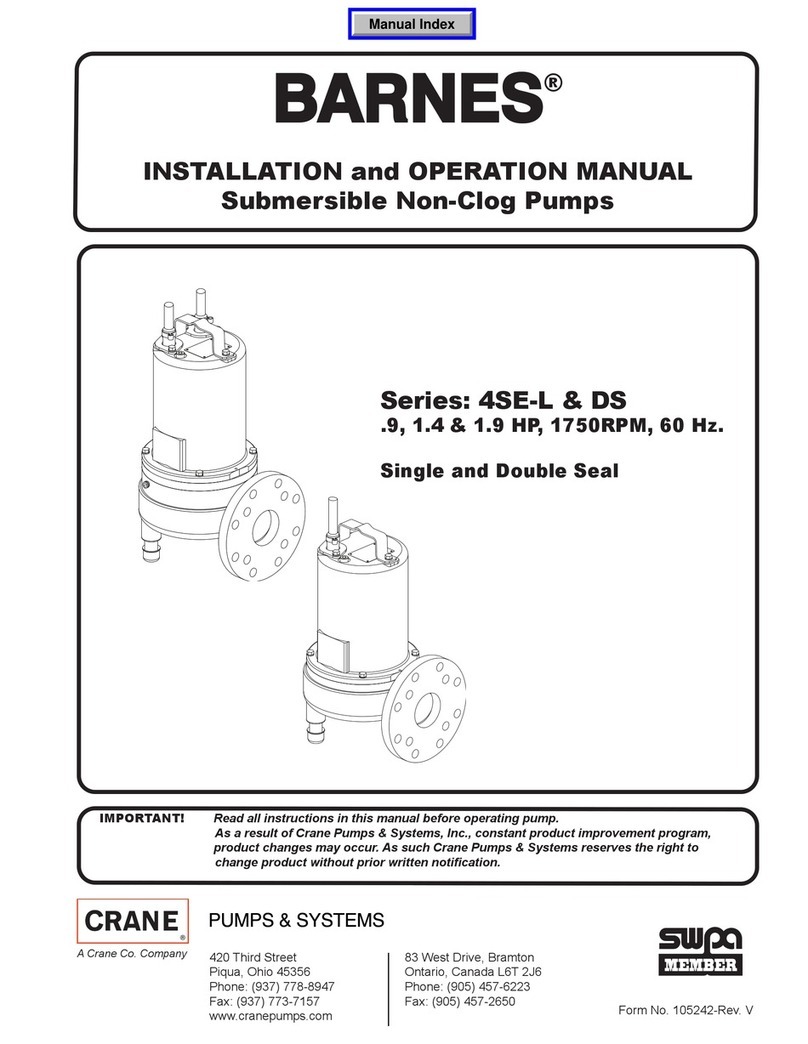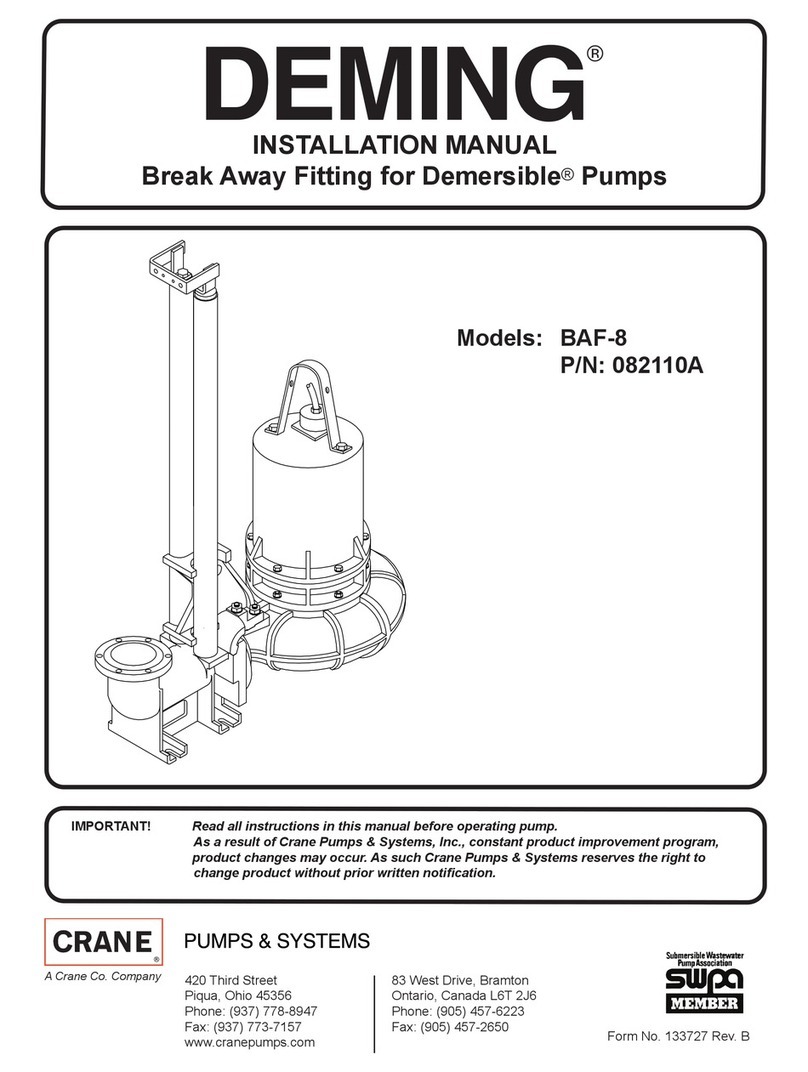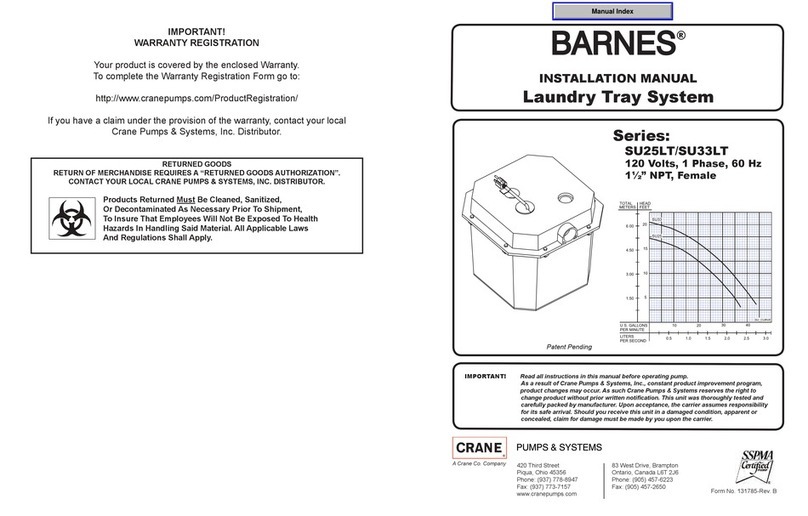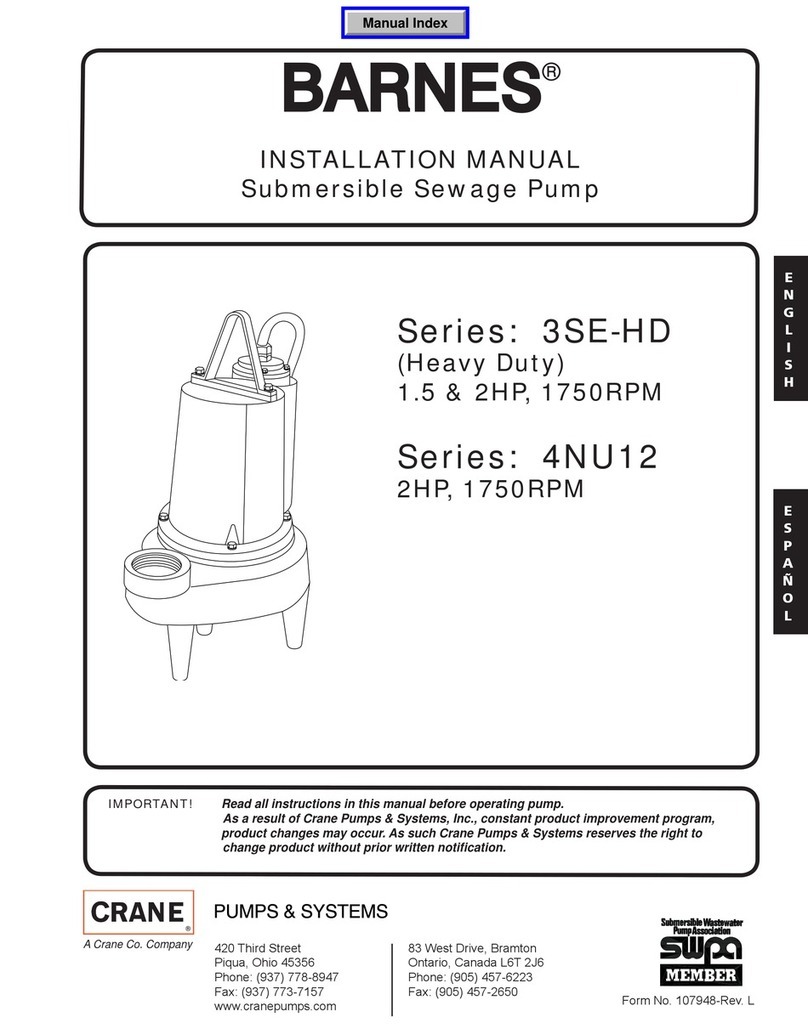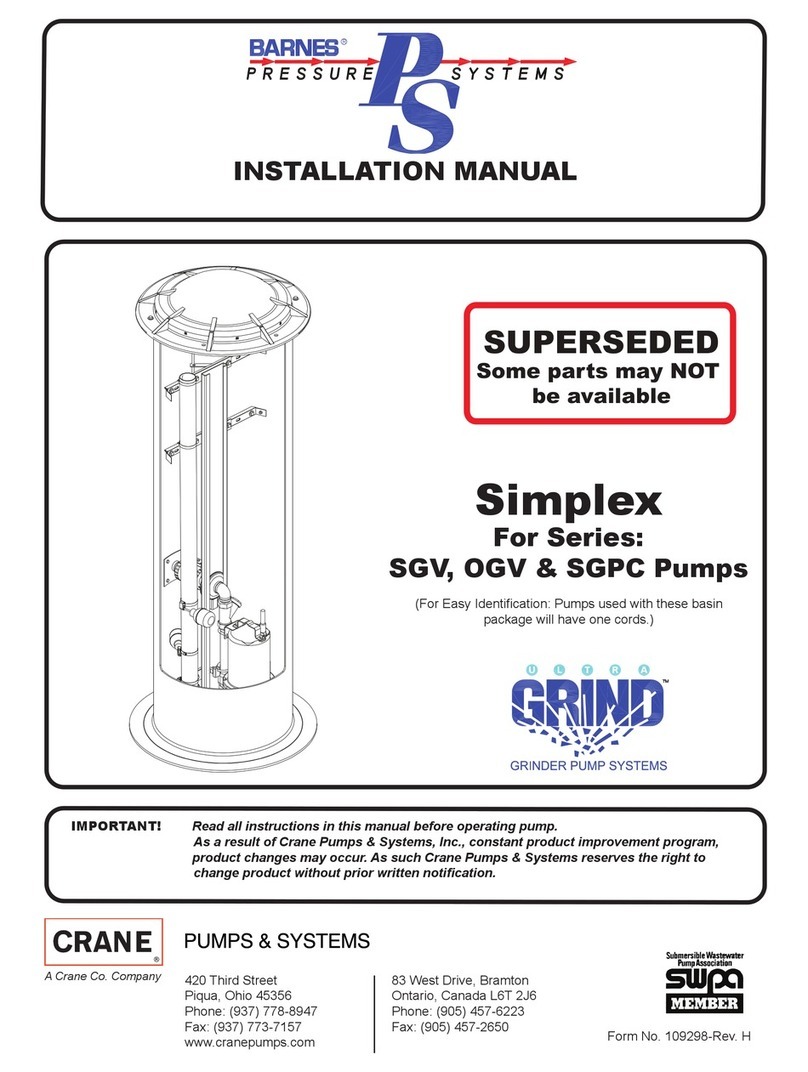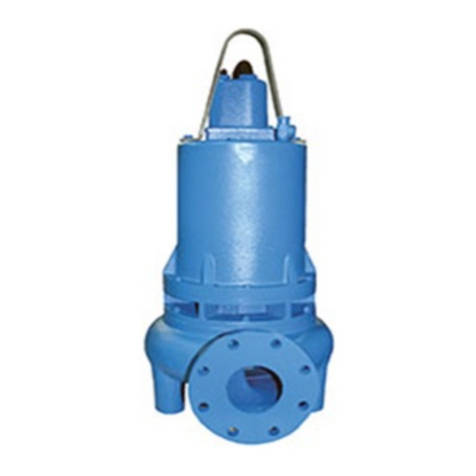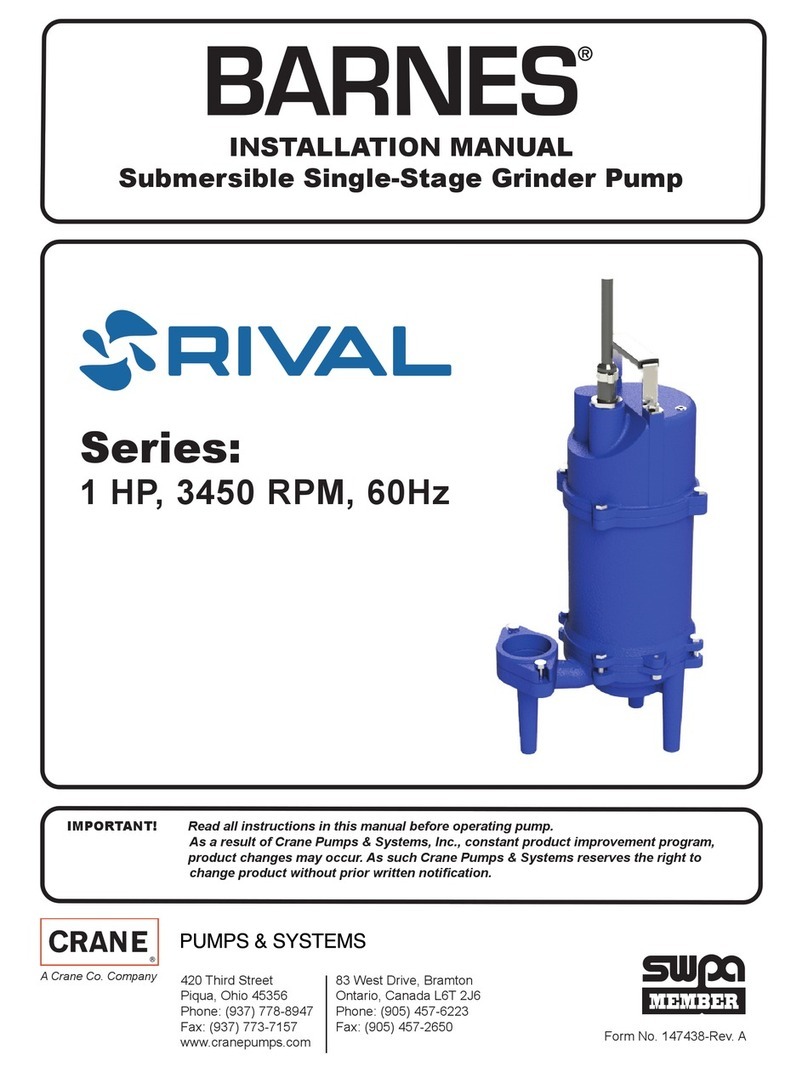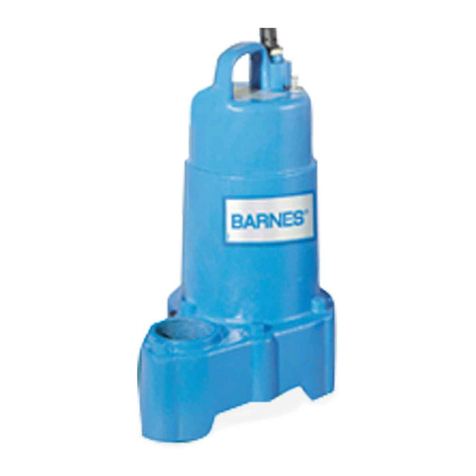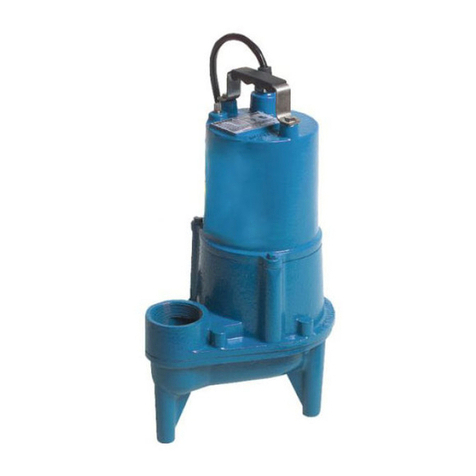
6
SECTION B: GENERAL INFORMATION
B-1) To the Purchaser:
Congratulations! You are the owner of one of the fi nest pumps
on the market today. These pumps are products engineered
and manufactured of high quality components. Over one
hundred years of pump building experience along with a
continuing quality assurance program combine to produce a
pump which will stand up to the toughest applications.
This manual will provide helpful information concerning
installation, maintenance, and proper service guidelines.
B-2) Receiving:
Upon receiving the pump, it should be inspected for damage
or shortages. If damage has occurred, fi le a claim immediately
with the company that delivered the pump. If the manual is
removed from the packaging, do not lose or misplace.
B-3) Storage:
Short Term - Prosser Pumps are manufactured for effi cient
performance following short inoperative periods in storage.
For best results, pumps can be retained in storage, as factory
assembled, in a dry atmosphere with constant temperatures
for up to six (6) months.
Long Term - Any length of time exceeding six (6) months, but
not more than twenty four (24) months. The units should be
stored in a temperature controlled area, a roofed over walled
enclosure that provides protection from the elements (rain,
snow, wind-blown dust, etc.), and whose temperature can be
maintained between +40 deg. F and +120 deg. F.
If extended high humidity is expected to be a problem, all
exposed parts should be inspected before storage and all
surfaces should then be sprayed with a rust-inhibiting oil.
Pump should be stored in its original shipping container.
On initial start up, rotate impeller by hand to assure seal
and impeller rotate freely. If it is required that the pump be
installed and tested before the long term storage begins, such
installation will be allowed provided:
1.) The pump is not installed under water for more than
one (1) month.
2.) Immediately upon satisfactory completion of the test,
the pump is removed, thoroughly dried, repacked in
the original shipping container, and placed in a
temperature controlled storage area.
B-4) Service Centers:
For the location of the nearest Prosser Service Center, check
your Prosser representative or Crane Pumps & Systems, Inc.,
Service Department in Piqua, Ohio, telephone (937) 778-8947
or Crane Pumps & Systems Canada, Bramton, Ontario,
(905) 457-6223.
SECTION C: INSTALLATION
C-1) Location:
These pumping units are designed for use with hydraulic
systems in locations where electrical connections are
unavailable or hazardous. Before pumping fl uids other than
water, consult the factory, giving fl uid, fl uid temperature,
specifi c gravity, viscosity, capacity in USGPM and total
head and/or pressure requirements, including friction loss
through discharge line, fi ttings, valves, etc. Maximum fl uid
temperature for sustained operation is 140°F (60°C) at
specifi c gravity 1.0. Pump may operate up to 10 minutes
running dry (not pumping water) without damage. DO NOT
allow pump to be buried in mud or sand.
IMPORTANT ! - Pump Should Have Strainer
Affixed At All Times. Inspect And Clean The Pump
Strainer Periodically For Maximum Efficiency And
Performance.
C-2) Discharge:
Discharge hose is recommended. If rigid pipe is used, install
so that there is no weight or strain on the pump. Install a short
pipe nipple into the pump discharge to attach the discharge
hose above the hydraulic connections at the top of the pump.
Save and replace the plastic shipping plugs in the hydraulic
line connection at the top of the pump whenever the hydraulic
lines are disconnected. This is to protect against damage to
the connections and entrance of dirt.
C-3) Suction:
Completely submerge the suction strainer for maximum
pumping effi ciency. Avoid entrance of air into the suction of the
pump. Strainer should always be installed on the pump while
operating.
C-4) Liquid Level Controls: (If Applicable)
Attach “ON” fl oat to discharge hose or pump cable at desired
pump “ON” level. Attach “OFF” fl oat to discharge hose or pump
cable at desired pump “OFF” level. The “OFF” fl oat must be
below the “ON” fl oat.
To attach the fl oats, thread the cable strap through the buckle
with the ratchet pawl, cinch up tight, thread excess strapping
through outer buckle slot. Be certain that the level controls
cannot hang up or foul in its swing. It is recommended that the
pump is completely submerged when the level control is in the
“Off ” mode.
C-5) Hydraulic System:
Figure 1 shows a schematic drawing of a typical hydraulic
power system for driving a submersible pump.
WARNING ! - Hydraulic system has high-pressure
capability. Exercise caution at all times.
CAUTION ! - Never block return (low pressure)
line. It’s best to use by-pass valve to control flow
of hydraulic fluid.
Maintain hydraulic fl uid temperature at 100°F (38°C) for
optimum performance. Maximum operating temperature is
180°F (82°C). See chart for viscosity of fl uid. Lower viscosity
fl uids can be used, but will increase the wear rate within the
hydraulic motor. A fi lter is required on the low pressure return
hydraulic fl uid line. Use fi lter elements rated at 25 micron
absolute. Protect hydraulic hoses from cuts and abrasion.
ALWAYS USE A BACK-UP WRENCH WHEN CONNECTING
AND DISCONNECTING THE HYDRAULIC LINES TO THE
FITTINGS ON TOP OF THE PUMP.
SECTION D: START-UP OPERATION
D-1) Check Pump Rotation:
Before putting pump into service for the fi rst time, the motor
rotation must be checked. To check the rotation, suspend the
pump freely, momentarily apply power, rotation of the pump
is clockwise when viewed from the suction end. To reverse
rotation, switch the two hydraulic lines. Reverse rotation will
not damage the pump, however, it will result in poor pump
performance.
